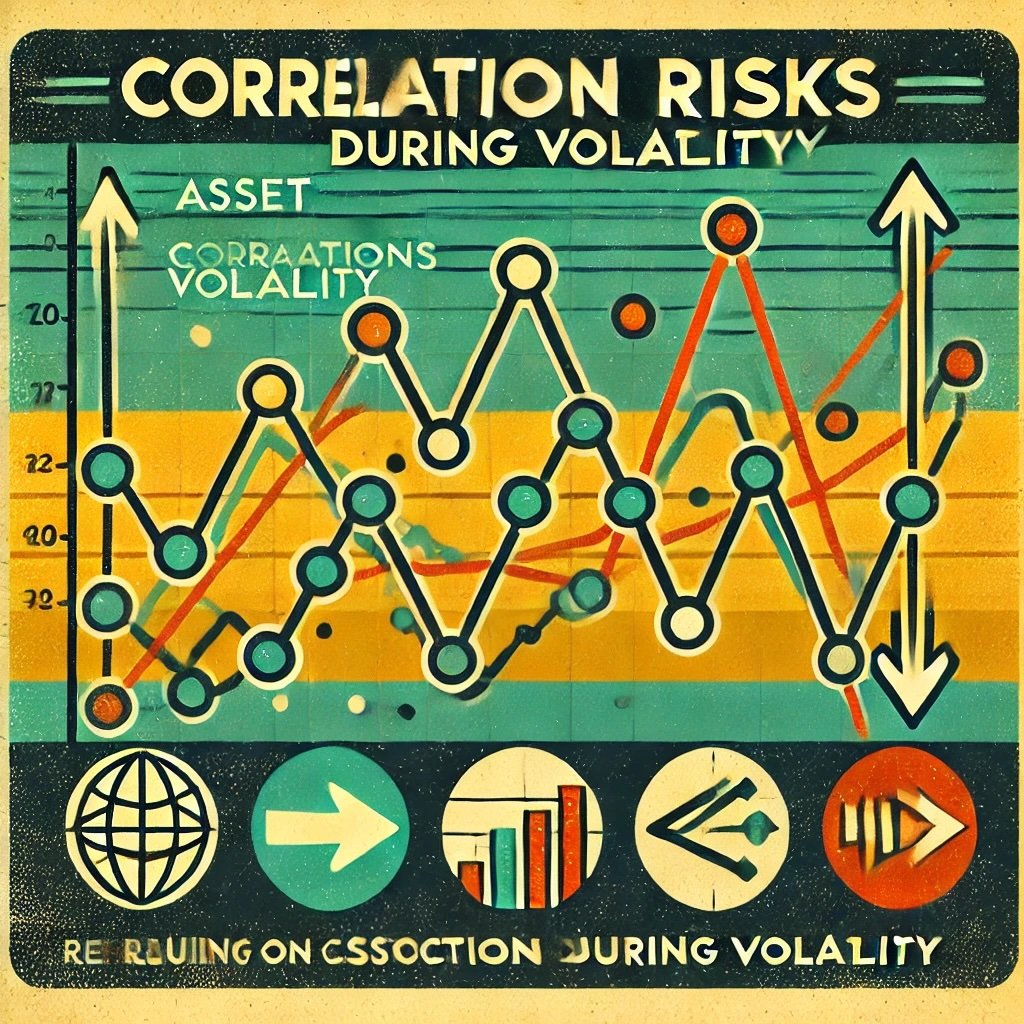Investors have long held firm to the idea that diversification is the ultimate shield against market volatility. For many decades, the consensus wisdom was that spreading money across multiple asset classes—like stocks, bonds, and maybe a dash of real estate—would weather just about any storm. But is traditional diversification enough?
Short answer: Not always.
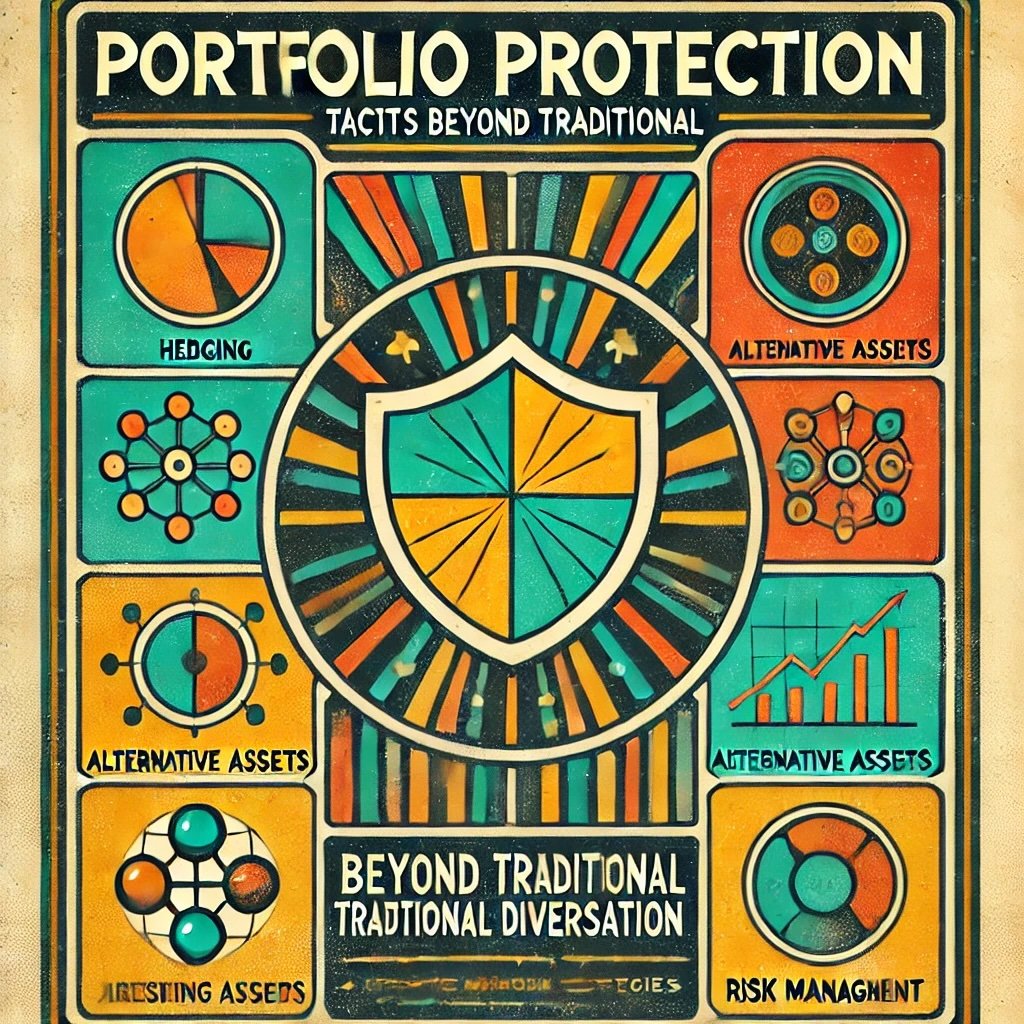
Sometimes, the world changes faster than expected. Correlations between asset classes can spike during crises. We saw it in the 2008 financial meltdown, and again when the pandemic rattled markets in 2020. When fear runs high, typically uncorrelated assets may move in the same direction. This phenomenon has forced both institutional and retail investors to seek new methods—tactics and strategies that go beyond the simplicity of splitting investments among stocks, bonds, and a sprinkle of international funds.
In today’s dynamic, often unpredictable financial environment, it’s prudent to be proactive rather than reactive. You might wonder, “Does that mean diversification is obsolete?” Not at all. Diversification remains a cornerstone of investing, especially for avoiding catastrophic losses in single holdings. However, you can’t ignore the warning signs that suggest it’s not an all-encompassing remedy.

The Evolution Of Markets
Markets evolve at breakneck speed. They’re also more interconnected than ever. A slump in one region can reverberate around the globe in seconds, affecting everything from oil prices to technology stocks to emerging market bonds. Cryptocurrencies, a relatively young asset class, have introduced even more complexity into the investing landscape. It’s a maze. And finding the right path demands flexibility, advanced planning, and sometimes, a willingness to use tools that traditional buy-and-hold investors rarely consider.
For instance, think about derivatives. These instruments—options, futures, swaps—have historically been relegated to hedge funds or sophisticated trading desks. Yet, more and more individual investors are learning the ropes to protect themselves from wild market swings. Or consider volatility-based strategies, which explicitly look to profit from, or hedge against, sudden changes in market sentiment. Even holding a simple cash position can serve as a valuable shock absorber in certain scenarios.
We also need to discuss behavioral aspects of investing. Protecting a portfolio isn’t just about asset allocation. It’s about cultivating the right mindset—knowing when to rebalance, maintaining discipline when fear grips the market, and running stress tests to expose hidden risks. These psychological and procedural steps can be as critical as choosing which ETFs or bonds to hold.
We’ll shine the spotlight some of these advanced tactics—not to replace diversification, but to supplement it with stronger defenses. You should have a clearer picture of how to layer different protective measures so that your portfolio isn’t just diversified, but also resilient enough to handle the next unforeseen crisis. Because as history shows, the next crisis is usually lurking around the corner.
In summary:
- We still need diversification, but we also need to recognize its limitations.
- There are newer, more advanced methods for managing portfolio risk in turbulent times.
- Behavioral discipline is as important as asset allocation.
Ready to dig deeper? Let’s begin by exploring why traditional diversification can fall short during systemic events, and how understanding its pitfalls is the first step to true portfolio robustness.
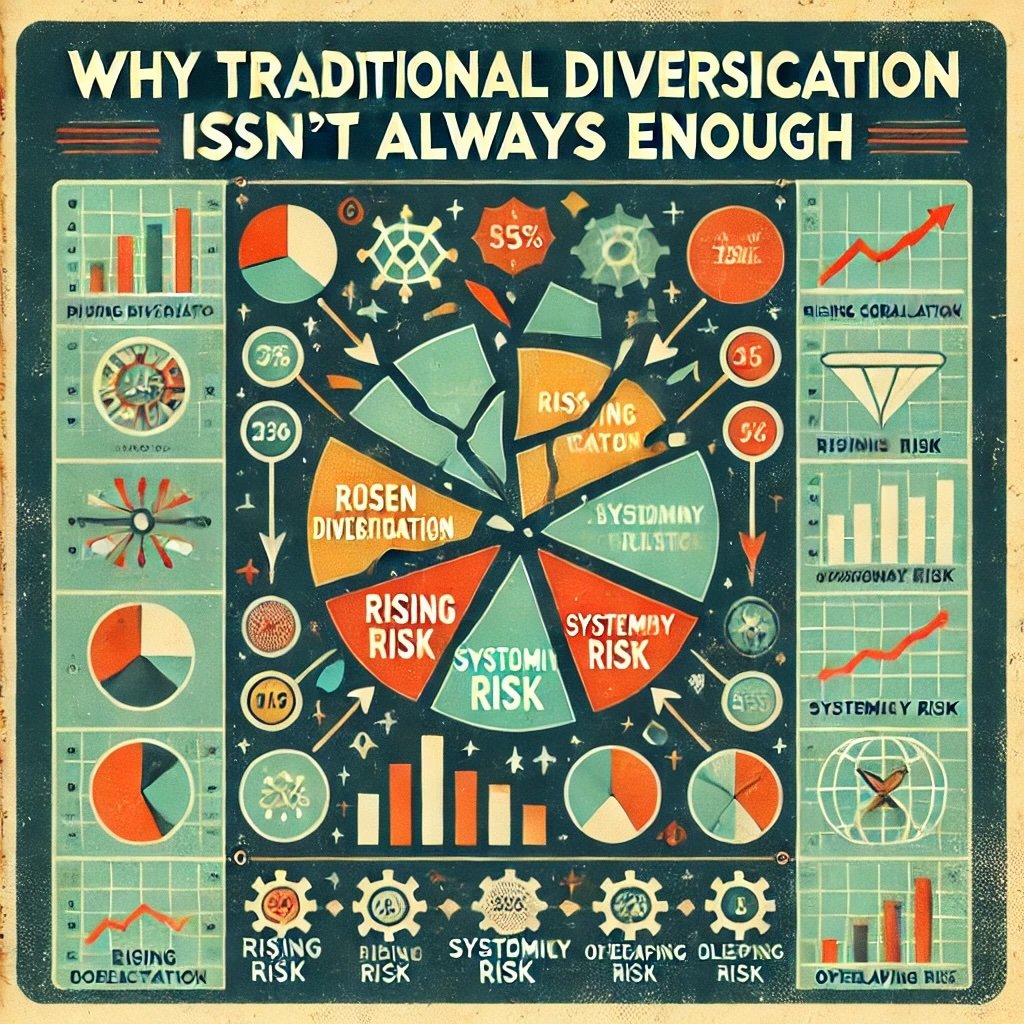
Understanding the Limitations of Traditional Diversification
Diversification, in its most standard sense, involves spreading out your holdings. Maybe you hold a mixture of large-cap and small-cap stocks. You toss in some international funds for global exposure. You also add high-grade corporate bonds and a few government bonds for stability. Perhaps you invest a slice in real estate investment trusts (REITs) or a minor allocation to a commodity fund. Voilà: a diversified portfolio. This strategy has, in many cases, worked admirably for decades, smoothing out returns and reducing volatility.
But here’s the reality check: Global crises tend to synchronize markets. During calm periods, your emerging market ETF might move differently than your U.S. technology fund. Your precious metals might zig while your utilities stocks zag. Yet, in times of extreme panic—think the Lehman Brothers collapse in 2008, or the onset of COVID-19 in 2020—correlations often surge to 1. In simpler terms, everything dives together, except maybe cash or short-term treasuries. That means the benefits you expected from spreading your bets across multiple asset classes can erode when you need them most.
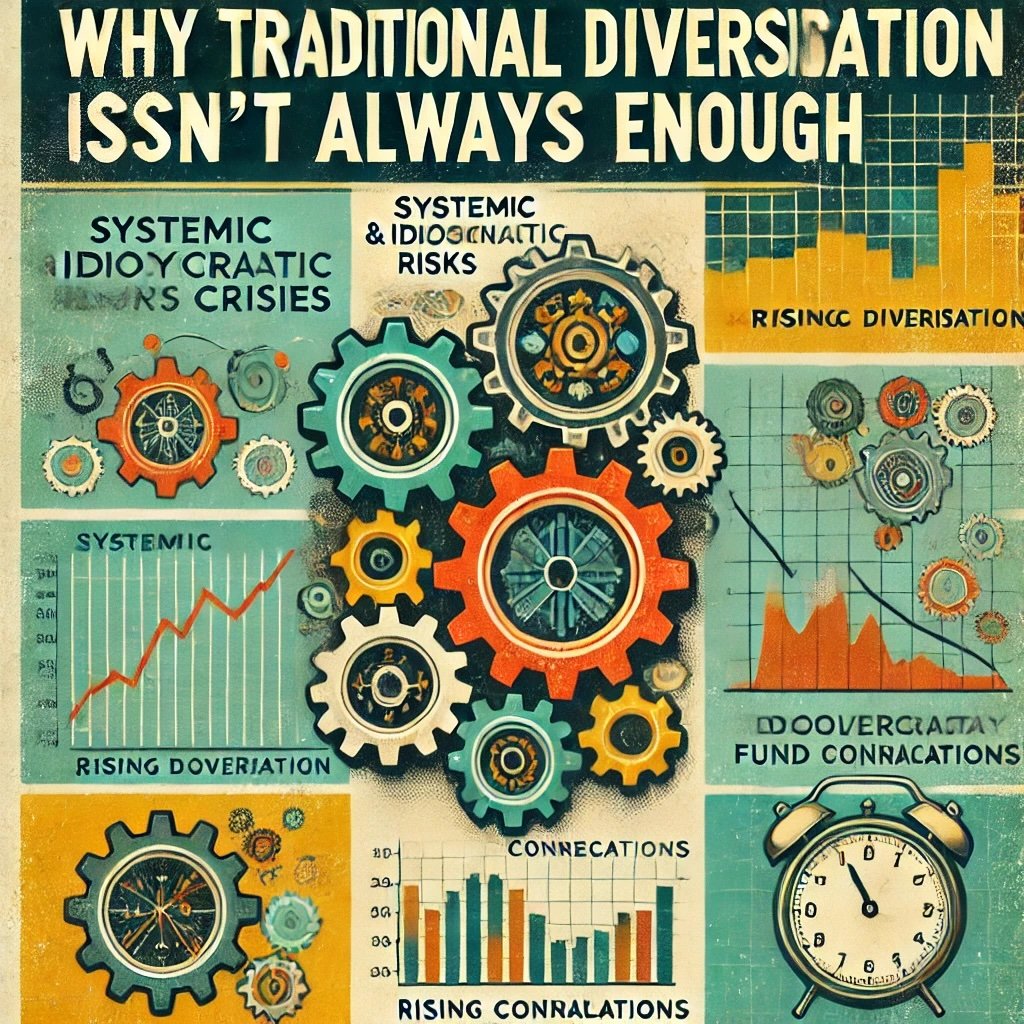
Why Traditional Diversification Isn’t Always Enough
- Rising Correlations in Crisis
During a market sell-off, risk assets can move in lockstep. The usual relationships between stocks, bonds, and alternative assets can break down, exposing a surprising fragility. This phenomenon is sometimes called “correlation breakdown,” although it’s more accurate to say correlations often break upward, unifying assets that used to behave differently. - Systemic vs. Idiosyncratic Risk
Idiosyncratic risk is risk tied to a specific company, industry, or region. Traditional diversification handles this well. If one company’s stock tanks due to a scandal, other sectors might remain unscathed. However, systemic risk affects the entire market ecosystem—like in a global financial meltdown or a severe recession. Traditional diversification struggles to mitigate systemic risk because all sectors, countries, or asset classes might feel the pinch simultaneously. - Concentration Within Funds
Sometimes, investors think they’re well-diversified when in truth they hold multiple funds that overlap heavily. For example, if you own several index ETFs that each track large-cap U.S. stocks, your real exposure might be heavily skewed toward the same top tech companies. - Speed of Market Movements
With high-frequency trading and round-the-clock global news, markets move fast. Many novice (and even some experienced) investors react too slowly when crisis hits, discovering belatedly that diversification was insufficient to stem losses.
Real-World Examples
- 2008 Financial Crisis: Before the collapse, many thought that holding a blend of U.S. equities, international equities, and real estate was robust. Yet when the credit markets froze, panic spilled over into virtually every corner of global finance. Even commodities, often touted as a hedge, didn’t emerge unscathed.
- 2020 COVID-19 Market Crash: In March 2020, stock markets worldwide plunged. Commodity prices fell, emerging markets slid, and corporate bonds took a hit. While treasuries offered some refuge, the wave of panic essentially punished all risk assets in tandem. The speed of the drop—one of the fastest in market history—demonstrated how quickly correlations can align in a systemic event.
Correlation Risks During Volatility
Investors often look at correlation tables during normal market conditions. They might see that asset A is negatively correlated to asset B, thus concluding they’re safe. But a correlation coefficient calculated over a five-year tranquil period can become irrelevant if, in a single month of extreme turmoil, that correlation coefficient shoots to +0.8. That’s the real dilemma. Historical correlations are not static; they shift, sometimes dramatically, in response to macroeconomic shocks.
The Call for Supplementary Strategies
This is why many financial advisors and seasoned investors recommend secondary lines of defense beyond just holding multiple asset classes. Some might use hedging tools, such as options, to protect a portion of their portfolio. Others might reduce risk by keeping an active watch on economic indicators and rebalancing more frequently, or by employing advanced techniques like risk parity or factor investing.
Ultimately, traditional diversification is still valuable for mitigating certain types of risk. It’s just not a perfect shield in severe scenarios. Recognizing this gap is step one. Step two is exploring how to fill it, which leads us to the realm of advanced risk management techniques.
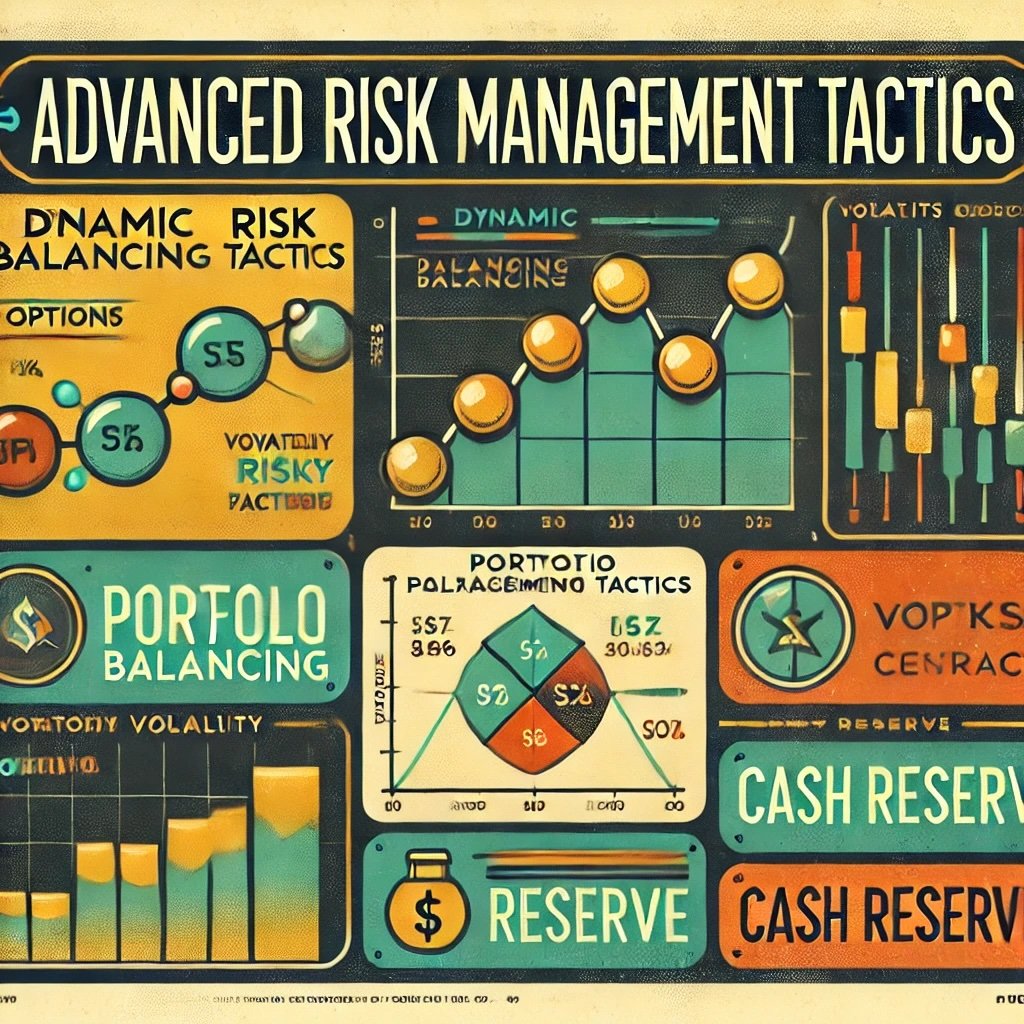
Advanced Risk Management Tactics
If you’ve recognized the shortcomings of standard diversification, you might be wondering: What else can I do? The good news is that investors now have unprecedented access to tools, resources, and insights that were once the sole province of hedge funds and institutional players. Advances in technology, coupled with the proliferation of financial instruments, have democratized many sophisticated strategies.
In this section, we’ll look at some of the go-to tactics for those seeking a sturdier safety net. We’ll dive into dynamic asset allocation, hedging with derivatives, volatility-based strategies, and the underrated power of cash.
Dynamic Asset Allocation
For decades, a common approach to investing was to pick a target allocation—say, 60% equities and 40% bonds—and rebalance annually. This static approach works well in certain market environments but might lag when conditions change rapidly. Dynamic asset allocation is a more flexible system that adjusts the portfolio’s composition based on real-time or near-real-time market signals.
- How It Works:
An investor using a dynamic strategy might reduce equity exposure when valuations become overextended or when macro indicators suggest a downturn. Conversely, they might shift back into stocks when prices appear more attractive or macro conditions improve. - Tools and Signals:
Investors can use technical indicators (like moving averages, relative strength index, or momentum metrics) or fundamental indicators (like changes in interest rates, GDP growth, or corporate earnings revisions). - Downside:
Being dynamic can lead to higher transaction costs and the risk of getting whipsawed by false signals. However, many see it as a proactive stance versus passively waiting for market storms to pass.
Hedging with Derivatives
In the past, the word derivatives carried a certain mystique—often negative—thanks to high-profile meltdowns linked to complex instruments. But used properly, derivatives like options, futures, and swaps can offer a powerful layer of protection.
- Options
- Protective Puts: Buying put options on a broad market index, such as the S&P 500, can cap your downside. If the market drops below a certain level, the put option can gain value, offsetting losses in your equity holdings.
- Covered Calls: Selling covered calls can generate premium income, which can act as a mild hedge, although it also caps upside.
- Futures
- Equity Index Futures: Shorting index futures if you expect a market downturn can effectively reduce your net exposure.
- Commodity Futures: Some investors use commodity futures as a partial hedge if they believe certain commodities will inversely correlate with equity markets during downturns.
- Swaps
- Interest Rate Swaps: Hedge exposure to rising or falling interest rates.
- Credit Default Swaps (CDS): Typically more advanced instruments, used to hedge credit risk in corporate or sovereign bonds.
While derivatives can be complex, basic hedging strategies have become more accessible through retail brokerages. The key is to understand the cost of hedging—often in the form of premiums for options—and to ensure the hedge aligns with the specific risk you want to mitigate.
Volatility-Based Strategies
Volatility isn’t just a byproduct of market chaos. It can be traded or used as a hedging mechanism in its own right. One common measure is the VIX (CBOE Volatility Index), often called the “fear gauge.”
- Long Volatility Positions:
In times of rising market stress, volatility tends to spike. Holding instruments that track or approximate the VIX’s performance can offset losses in a conventional equity portfolio. However, timing is everything: volatility often reverts to its mean quickly, making it risky to hold volatility instruments for long stretches. - Inverse Volatility Products:
More speculative investors sometimes use inverse volatility products to bet on calm markets. This is not a protective measure but is worth mentioning because it highlights the range of volatility trading vehicles available. - Volatility ETFs and ETNs:
Exchange-traded funds (ETFs) and exchange-traded notes (ETNs) based on VIX futures can be used to implement volatility strategies without diving directly into futures contracts. These instruments come with their own complexities, including contango risk, so thorough research is essential.
Cash and Cash Equivalents
Never underestimate the power of cash. It might sound counterintuitive when everyone else seems to chase high returns, but holding a portion of your portfolio in cash or cash equivalents (like short-term treasuries or money market funds) can be a surprisingly potent defensive move.
- Liquidity Advantage:
When markets fall and volatility spikes, having a liquid reserve lets you buy undervalued assets at fire-sale prices or simply weather the storm with minimal damage. - Psychological Comfort:
A robust cash position can help you avoid panic selling. Knowing you have dry powder on the sidelines can foster a calmer perspective when portfolio values fluctuate. - Opportunity Cost:
The main downside is that cash yields might be low (though rising interest rates can make cash more attractive). You also risk lagging behind during bull markets. Nevertheless, as a tactical hedge, cash can be a lifesaver.
Putting It All Together
Advanced risk management is rarely about a single tactic. It’s about blending multiple strategies. For instance, you might maintain a core diversified portfolio, layer in a small hedge with put options, hold some cash, and dynamically shift allocations based on market indicators. Each piece contributes to a defense that’s more robust than what a static, traditional allocation can achieve alone.
Before moving on, remember this critical point: advanced tactics also mean advanced responsibilities. Mistakes can be costly. Misusing leverage, failing to understand derivative pricing, or panicking and exiting a hedge at the wrong time can lead to undesirable outcomes. That’s why thorough education, possibly with the guidance of a financial professional, is vital before diving into the deep end of risk management.

Alternative Investment Options for Portfolio Protection
When people discuss diversification, they usually focus on the classic triad of stocks, bonds, and cash equivalents. Over the years, real estate also snuck into the conversation, often via REITs. But modern financial markets offer a vast spectrum of alternative investments that can serve as additional layers of protection. While none are guaranteed shields, these alternatives can reduce overall portfolio correlation if chosen wisely.
Gold and Precious Metals
Gold is often called the ultimate “safe haven” asset. In times of heightened geopolitical tension, rampant inflation, or severe market distress, many investors flock to gold, sending its price higher.
- Why Gold?
Historically, gold’s price performance can differ from equities, especially during panic-driven sell-offs. However, gold isn’t a perfect hedge. There have been episodes where gold dropped alongside stocks. But long-term, it tends to hold its value better than many risk assets under extreme uncertainty. - Implementation:
- Physical Bullion: Bars or coins stored in a secure facility.
- Gold ETFs: Offer liquidity and ease of trading.
- Mining Stocks: Indirect exposure through companies involved in gold production, though these stocks can correlate more closely with equity markets.
Beyond gold, silver, platinum, and palladium can also provide partial hedges, but they often have stronger industrial uses, making them more economically sensitive.
Real Assets: Real Estate, Infrastructure, and Commodities
When we say “alternative investments,” we’re not just talking about precious metals. Real assets—physical or tangible assets—are another avenue. These can include real estate (both residential and commercial), infrastructure projects (like toll roads, ports, or renewable energy facilities), and broad commodities (e.g., oil, natural gas, agricultural products).
- Real Estate:
- Residential property can serve as a long-term store of value, especially in markets with growing populations.
- Commercial real estate tends to produce rental income but can be cyclical, tied to economic growth.
- Publicly traded REITs have higher liquidity but can correlate more with stock markets than direct property ownership.
- Infrastructure:
- Often, infrastructure projects have steady cash flows backed by government contracts or user fees.
- Low correlation to public equities is possible, but these assets can be illiquid or require large capital outlays.
- Commodities:
- Commodity exposure—through futures or commodity-based ETFs—can hedge specific risks, such as inflation or supply shocks.
- However, commodity markets can be extremely volatile, so proceed with care.
Private Equity and Hedge Funds
For high-net-worth individuals and institutions, private equity and hedge funds are staples in portfolio construction, partly because they diversify away from the public markets.
- Private Equity (PE):
- Investments in privately held companies.
- Potentially high returns but also illiquid and with a long holding period.
- Valuations may not fluctuate daily like public stocks, reducing perceived volatility, though actual underlying risk still exists.
- Hedge Funds:
- Employ varied strategies—long-short equity, market neutral, global macro—that aim for absolute returns uncorrelated to broader markets.
- Fees can be high (the infamous “2 and 20” model), and performance varies widely. Some hedge funds deliver robust downside protection, others do not.
Cryptocurrencies
No conversation about modern alternatives is complete without cryptocurrencies, particularly Bitcoin. Proponents argue that crypto can act as a hedge against monetary debasement, pointing to its limited supply (in Bitcoin’s case) and potential status as “digital gold.” Critics highlight extreme volatility, regulatory uncertainties, and the fact that crypto often behaves like a high-risk tech asset during market sell-offs, rather than a reliable safe haven.
- Bitcoin:
- The first and most recognized cryptocurrency.
- Wild price swings, with the capacity for eye-watering gains and catastrophic drops.
- Other Altcoins:
- Ethereum, Ripple (XRP), and thousands of others. Many are even more volatile than Bitcoin.
- Utility often tied to specific use cases, so correlation to broader markets can be inconsistent.
If you opt for crypto as a hedge, do so cautiously. Allocate only what you can afford to lose, and understand that its correlation dynamics are still evolving. Some periods have shown a negative correlation with equities, while others reveal a high positive correlation during risk-off events.
Balancing Alternative Investments
Just because something is labeled an “alternative investment” doesn’t guarantee it’s a good fit for your portfolio. Prudent analysis of risk, liquidity needs, and correlation patterns is essential. The overarching goal is to introduce assets or strategies that behave differently than your existing core holdings—especially during major market downturns. By doing so, you might cushion overall losses, or even find pockets of positive returns when other areas are in decline.
Lastly, keep in mind that alternatives can also come with higher fees, less liquidity, and sometimes a greater regulatory or operational risk. Thorough due diligence, understanding the manager’s track record (where applicable), and carefully weighing position sizes are critical steps before incorporating these assets into your portfolio.
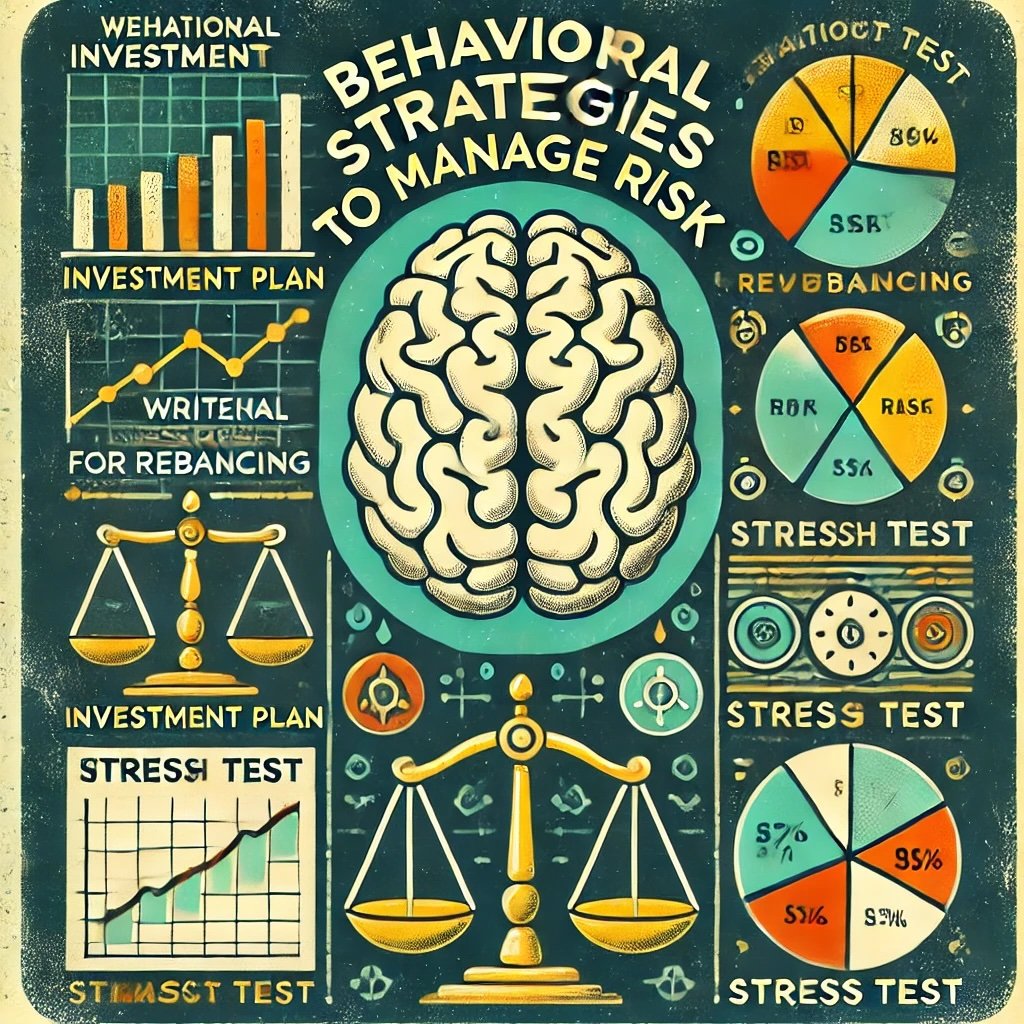
Behavioral Strategies to Manage Risk
Staying protected isn’t solely about asset choices or sophisticated hedging tactics. Investor psychology plays a monumental role in shaping outcomes, particularly during volatile periods. Even the best asset allocation can fail if you succumb to panic selling or chase hot trades at market tops. That’s why a framework of behavioral strategies is indispensable for sustaining a robust, crisis-ready portfolio.
Sticking to a Plan
A well-structured investment plan outlines your financial goals, risk tolerance, asset allocation preferences, and investment horizon. Writing it down might feel tedious, but this document serves as a north star when emotions run high.
- During Market Turbulence:
When the market plunges by 10% in a single week, your primal instinct might be to sell everything. Instead, revisit your plan. Ask whether the event triggers any specific rules you’ve set. If not, hold tight. Plans can prevent decisions driven solely by fear. - During Market Euphoria:
The same plan also cautions you against becoming too greedy when markets surge. If your allocation to stocks balloons beyond your target threshold, it’s time to rebalance and lock in profits, even if the upside seems endless.
Rebalancing
Rebalancing is the periodic process of returning your portfolio to its target allocation. For instance, if your equities grow more than your bonds, you might sell some equities and buy more bonds to restore the original balance.
- How Often to Rebalance:
- Calendar-Based: Rebalance annually or semi-annually.
- Threshold-Based: Rebalance only when an asset class drifts a certain percentage away from its target.
- Benefits:
- It enforces buy low, sell high, taking profits from overperforming assets and redeploying them into underperforming ones.
- It reduces the risk of over-concentration in a single asset class.
Stress Testing Portfolios
Think of stress testing as a fire drill for your investments. By simulating worst-case scenarios, you identify weak spots and can take preemptive action.
- Historical Stress Tests:
- Apply the market conditions from events like the 2008 crisis or the 2020 pandemic.
- Estimate how your current portfolio might have performed under those exact conditions.
- Hypothetical Scenarios:
- Imagine a sudden spike in interest rates or a geopolitical crisis.
- Model the potential impact on equities, bonds, and alternative assets.
- Software Tools:
- Many brokerages and wealth management platforms offer stress-testing tools.
- Consider advanced services that allow you to tailor the severity and duration of hypothetical events.
By understanding possible outcomes, you can tighten up your risk management. Maybe you discover that a large portion of your portfolio is vulnerable to rising interest rates. Perhaps your exposure to emerging markets is bigger than you realized. Proactive adjustments—like adding a hedge or trimming positions—can happen well before any real crisis unfolds.
Avoiding Emotional Decision-Making
Short sentences can be powerful here: Markets are emotional. Investors are human. We see gains, and we want more. We see losses, and we want out. Yet impulsive moves often lead to suboptimal results.
- Fear vs. Greed:
These two emotions dominate market psychology. Fear causes panic selling at bottoms. Greed spurs FOMO (fear of missing out) buying at tops. - Set Clear Entry and Exit Rules:
If you prefer a more active style, define your signals ahead of time. For instance, “If stock XYZ falls 15% from its recent high, I’ll add a small position because my fundamental analysis still supports it.” Or “If it rises 20% above my cost basis, I might take partial profits.” - Mindful Investing:
Some investors find mindfulness techniques or journaling helpful in curbing emotional reactivity. The goal: make decisions based on data and predetermined strategy, not fleeting market sentiments.
The Importance of Liquidity
A final behavioral consideration is recognizing that liquidity matters. If you trap too much money in illiquid investments—like private equity or specialized real estate projects—you may find yourself unable to act quickly when the market changes. Balancing the pursuit of higher returns in illiquid assets with the need for easy liquidity is a nuanced decision. But it’s part of a holistic risk management approach, especially for individuals who might need to draw on their capital unexpectedly.
Why Behavioral Strategies Can Trump Technical Ones
A quick story: In times of crisis, even legendary investors sometimes fall prey to panic. The meltdown of Long-Term Capital Management in 1998 was orchestrated by a team that included Nobel Prize-winning economists. They had sophisticated models, yet human emotions, overconfidence, and market chaos led to a near-catastrophic collapse.
This anecdote underscores a truth: No matter how advanced your strategies are, if you can’t control your reactions, you may sabotage your own portfolio. That’s why combining technical prowess (hedges, alternative assets, dynamic allocation) with a steadfast behavioral framework might well be the ultimate recipe for portfolio protection.
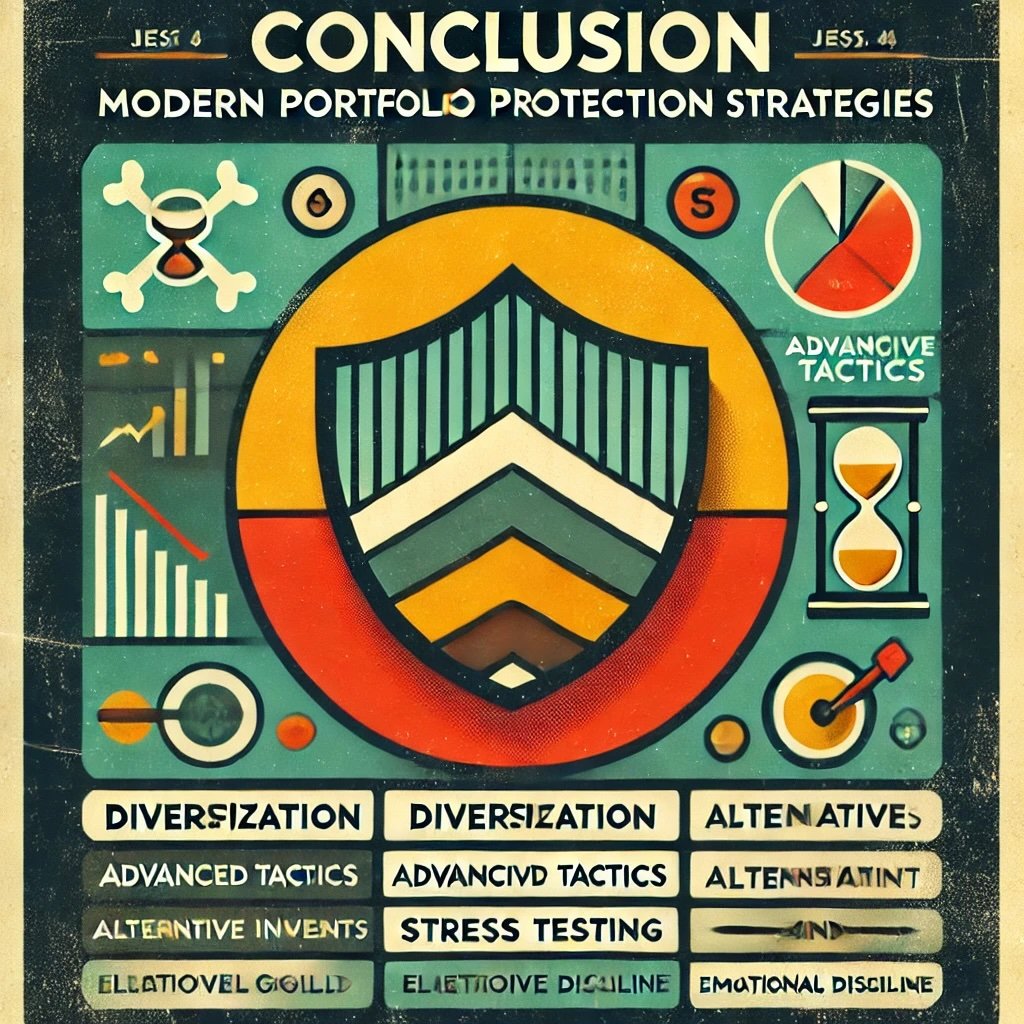
Portfolio Protection Beyond Traditional Diversification: 12-Question FAQ
What’s the core problem with “just diversify”?
In severe selloffs, correlations among risky assets often spike toward 1.0, shrinking diversification benefits exactly when you need them most. Protection requires additional layers: hedges, crisis-responsive strategies, liquidity, and disciplined process.
How do I decide which protection tactics to use?
Start with a risk map: sequence-of-returns risk, drawdown tolerance, liquidity needs, time horizon, taxes. Match tools to risks (e.g., tail hedges for crash risk, duration for growth shocks, managed futures for regime shifts).
How big should a “defense sleeve” be?
Typical ranges: 5–25% of portfolio across cash/T-Bills, long duration Treasuries, trend/managed futures, and optional long-vol or put hedges. Size by objective: retirees and distribution portfolios lean higher; accumulators can run lighter.
What are practical, low-maintenance defense building blocks?
Cash & T-Bills: Dry powder + psychological ballast.
Long duration Treasuries: Often rally in growth shocks (not guaranteed).
Managed futures / trend: Potential to go long/short across asset classes; historically helpful in major dislocations.
Gold / real assets: Partial inflation or crisis diversifier (path dependent).
When do options-based tail hedges make sense?
If you must cap drawdowns, consider a small allocation to long-dated OTM puts or structured collars. Expect a carry cost most years; the trade is paying insurance to survive deep left-tail events.
Is “volatility” an asset I can use?
Yes—long-volatility funds or VIX-linked strategies can spike when markets panic. They can bleed in calm regimes, so keep sizing modest and combine with other diversifiers to smooth carry.
What’s “dynamic” vs “static” diversification?
Static = fixed 60/40 with periodic rebalance. Dynamic = rules that reduce risk when trends break or valuations/credit conditions deteriorate, then add risk when signals improve. Use simple, auditable rules to avoid discretion drift.
Do factors (value, quality, low-vol, momentum) help in crises?
They’re not guarantees, but certain factors (e.g., quality, low-vol) can soften drawdowns; momentum can adapt to new trends. Blend factors and avoid concentration in one style.
What role do rebalancing rules play in protection?
They enforce buy-low/sell-high and prevent risk drift. Use thresholds (e.g., ±20% band around targets) or calendar + bands. In fast markets, consider staged rebalances (ladder back in) to reduce timing risk.
How do I stress test a protection plan?
Model historical shocks (2008, 2020), plus hypotheticals (inflation spike, credit spread blowout, sharp dollar rally). Track max drawdown, time to recovery, liquidity usage, and whether hedges delivered cash when needed.
What implementation pitfalls should I avoid?
Oversizing hedges (long-run return drag).
Rube-Goldberg complexity you won’t maintain.
Leverage without hard risk controls.
Mismatched horizons (short options hedges vs long-term risks).
Ignoring costs/taxes (turnover, option decay, K-1s).
How do I codify protection so I actually follow it?
Write an Investment Policy Statement with: target allocations, defense sleeve size, signal triggers, rebalancing bands, pre-approved hedge playbook, and a crisis checklist (what you’ll do, when, and with what cash).
Conclusion
Financial markets are unpredictable. They are driven by countless variables—global economics, geopolitical tensions, technological disruptions, and, yes, raw human psychology. For years, many investors have relied primarily on diversification to cope with this uncertainty. Diversification remains essential, but as we’ve explored, it can fall short in extreme conditions when you need it the most.
We’ve journeyed through a range of topics:
- The Shortcomings of Traditional Diversification: You learned how correlations can surge during crises, making broad-based diversification less effective in protecting against systemic downturns.
- Advanced Risk Management Tactics: Dynamic asset allocation, derivatives, and volatility-based strategies can serve as robust additional defenses. You also saw why sometimes holding cash is both a simple and powerful hedge.
- Alternative Investment Options: From gold and real estate to private equity and even cryptocurrencies, there are many avenues for expanding your portfolio beyond the usual suspects—though each comes with its own set of risks and complexities.
- Behavioral Strategies: No protective measure works if you’re prone to panic or impulsive decisions. Sticking to a plan, rebalancing, stress testing, and managing your emotions are all pivotal in ensuring your portfolio remains stable during storms.
In essence, modern portfolio protection requires a multi-layered approach. Yes, you want that core of diversified assets. But you also want strategic hedges, alternative holdings that offset your primary exposures, and a rock-solid behavioral framework to keep you steady when the markets are anything but.
Final Thoughts
- Adaptability: Markets change, so should you. Whether it’s rebalancing more often, implementing options hedges, or exploring new alternative assets, flexibility is a competitive edge.
- Education and Due Diligence: Tools like derivatives or cryptocurrencies can enhance portfolio protection. But misuse, or a lack of understanding, can backfire. Never invest in something you don’t understand.
- Regular Checkups: Portfolios are like living organisms. They need periodic checkups—stress tests, correlation analyses, and rebalancing—to remain healthy.
- Psychological Readiness: Even the best allocation won’t help if you bail at the first sign of trouble. Cultivate emotional discipline and plan for volatility.
Portfolio protection is an ongoing endeavor, not a one-time fix. The world evolves, and so do market dynamics. A strategy that works well today might need tweaking tomorrow. By combining the insights from advanced tactics, prudent alternative investments, and a sturdy mental game, you position yourself to navigate whatever twists and turns the financial world throws at you.
Remember: your ultimate goal isn’t just to avoid losses. It’s to build a resilient, long-term plan that lets you stay invested through market cycles, seize opportunities when they arise, and sleep better at night knowing you’ve taken proactive steps to safeguard your wealth.
Good luck—and may your portfolio remain ever protected, yet primed for growth!
Important Information
Comprehensive Investment Disclaimer:
All content provided on this website (including but not limited to portfolio ideas, fund analyses, investment strategies, commentary on market conditions, and discussions regarding leverage) is strictly for educational, informational, and illustrative purposes only. The information does not constitute financial, investment, tax, accounting, or legal advice. Opinions, strategies, and ideas presented herein represent personal perspectives, are based on independent research and publicly available information, and do not necessarily reflect the views or official positions of any third-party organizations, institutions, or affiliates.
Investing in financial markets inherently carries substantial risks, including but not limited to market volatility, economic uncertainties, geopolitical developments, and liquidity risks. You must be fully aware that there is always the potential for partial or total loss of your principal investment. Additionally, the use of leverage or leveraged financial products significantly increases risk exposure by amplifying both potential gains and potential losses, and thus is not appropriate or advisable for all investors. Using leverage may result in losing more than your initial invested capital, incurring margin calls, experiencing substantial interest costs, or suffering severe financial distress.
Past performance indicators, including historical data, backtesting results, and hypothetical scenarios, should never be viewed as guarantees or reliable predictions of future performance. Any examples provided are purely hypothetical and intended only for illustration purposes. Performance benchmarks, such as market indexes mentioned on this site, are theoretical and are not directly investable. While diligent efforts are made to provide accurate and current information, “Picture Perfect Portfolios” does not warrant, represent, or guarantee the accuracy, completeness, or timeliness of any information provided. Errors, inaccuracies, or outdated information may exist.
Users of this website are strongly encouraged to independently verify all information, conduct comprehensive research and due diligence, and engage with qualified financial, investment, tax, or legal professionals before making any investment or financial decisions. The responsibility for making informed investment decisions rests entirely with the individual. “Picture Perfect Portfolios” explicitly disclaims all liability for any direct, indirect, incidental, special, consequential, or other losses or damages incurred, financial or otherwise, arising out of reliance upon, or use of, any content or information presented on this website.
By accessing, reading, and utilizing the content on this website, you expressly acknowledge, understand, accept, and agree to abide by these terms and conditions. Please consult the full and detailed disclaimer available elsewhere on this website for further clarification and additional important disclosures. Read the complete disclaimer here.

